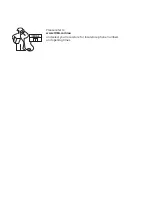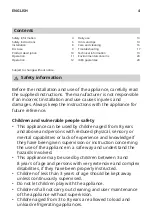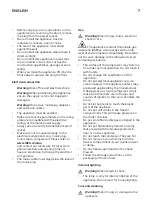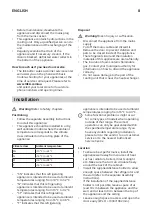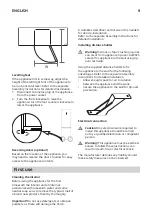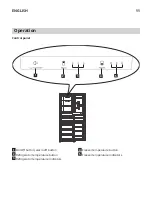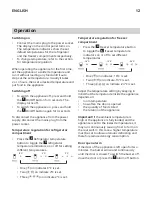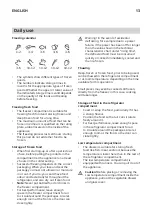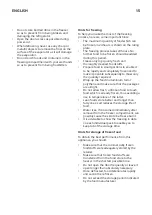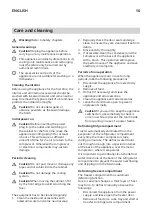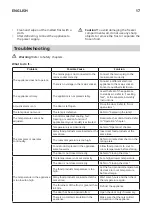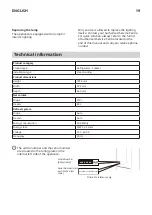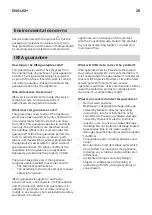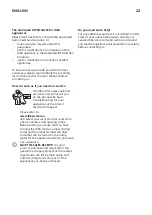
16
ENGLISH
Care and cleaning
Warning!
Refer to Safety chapters.
General warnings
Caution!
Unplug the appliance before
carrying out any maintenance operation.
This appliance contains hydrocarbons in its
cooling unit; maintenance and recharging
must therefore only be carried out by
authorized technicians.
The accessories and parts of the
appliance are not suitable for washing in a
dishwasher.
Cleaning the interior
Before using the appliance for the first time, the
interior and all internal accessories should be
washed with lukewarm water and some neutral
soap to remove the typical smell of a brand-new
product, then dried thoroughly.
Caution!
Do not use detergents or
abrasive powders, as these will damage
the finish.
Initial power on
Caution!
Before inserting the power
plug in to the outlet and switching on
the cabinet for the first time, leave the
appliance standing upright for at least
4 hours. This will assure a sufficient
amount of time for the oil to return to the
compressor. Otherwise the compressor
or electronic components may sustain
damage.
Periodic cleaning
Caution!
Do not pull, move or damage any
pipes and/or cables inside the cabinet.
Caution!
Do not damage the cooling
system.
Caution!
When moving the cabinet, lift it
by the front edge to avoid scratching the
floor.
The equipment has to be cleaned regularly:
1. Clean the inside and accessories with
lukewarm water and some neutral soap.
2. Regularly check the door seals and wipe
clean to ensure they are clean and free from
debris.
3. Rinse and dry thoroughly.
4. If accessible, clean the condenser and the
compressor at the back of the appliance
with a brush. This operation will improve
the performance of the appliance and save
electricity consumption.
Periods of non-operation
When the appliance is not in use for long
periods, take the following precautions:
1. Disconnect the appliance from electricity
supply.
2. Remove all food.
3. Defrost (if necessary) and clean the
appliance and all accessories.
4. Clean the appliance and all accessories.
5. Leave the door/doors open to prevent
unpleasant smells.
Caution!
If you want to keep the appliance
switched on, ask somebody to check it
once in a while to prevent the food inside
from spoiling in case of a power failure.
Defrosting fridge compartment
Frost is automatically eliminated from the
evaporator of the refrigerator compartment
every time the motor compressor stops,
during normal use. The defrost water drains
out through a trough into a special container
at the back of the appliance, over the motor
compressor, where it evaporates.
It is important to periodically clean the defrost
water drain hole at the back of the refrigerator
compartment to prevent the water overflowing
and dripping onto the food inside.
Defrosting freezer compartment
The freezer compartment has automatic
defrosting function.
Due to seasonal changes, a thick layer of frost
may form. To defrost manually, observe the
followings.
• Disconnect the appliance from the power
supply, and leave open the freezer door.
• Remove all foods, ice cube tray and shelf or
transfer to refrigerator compartment.

